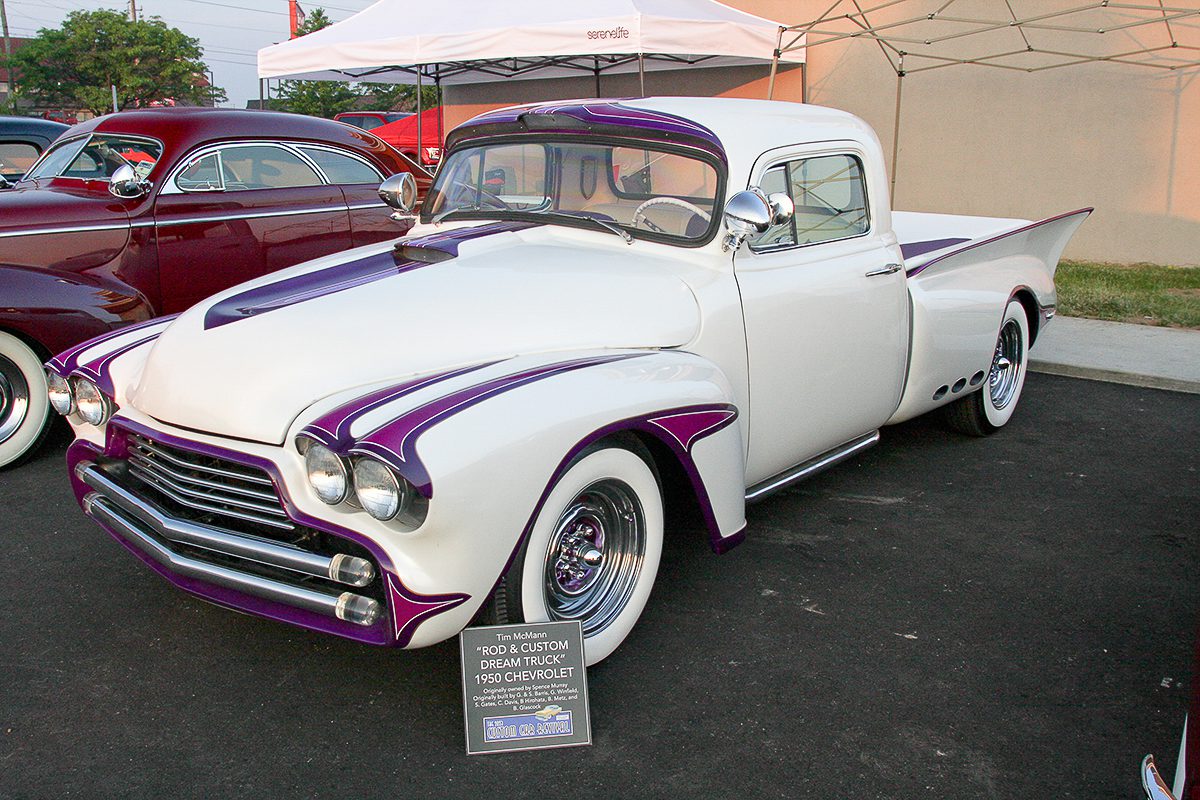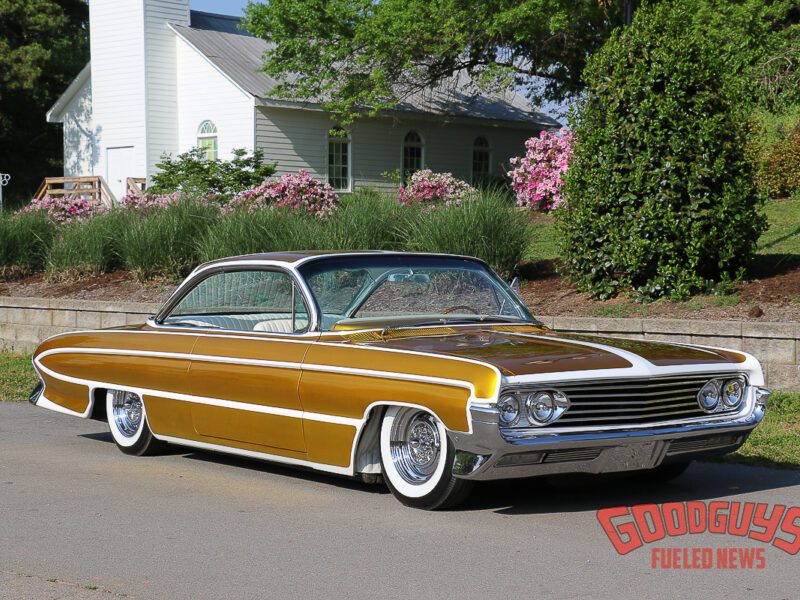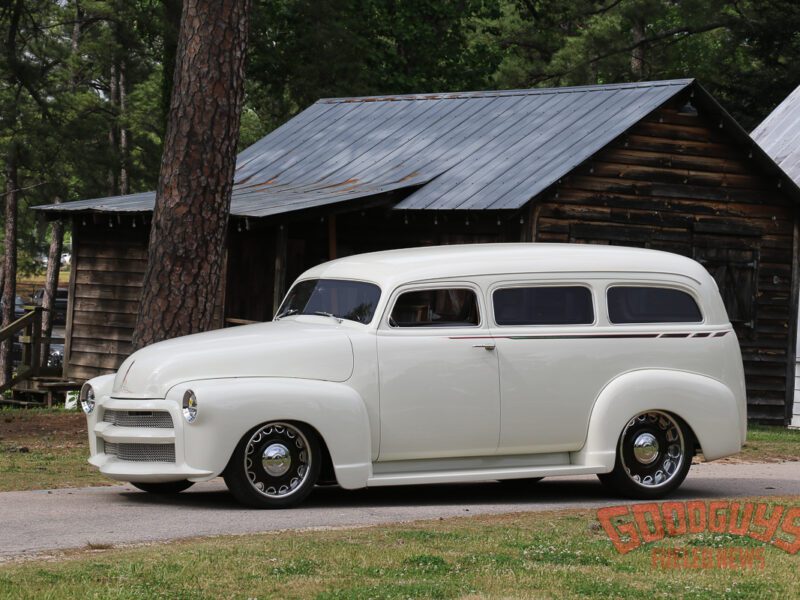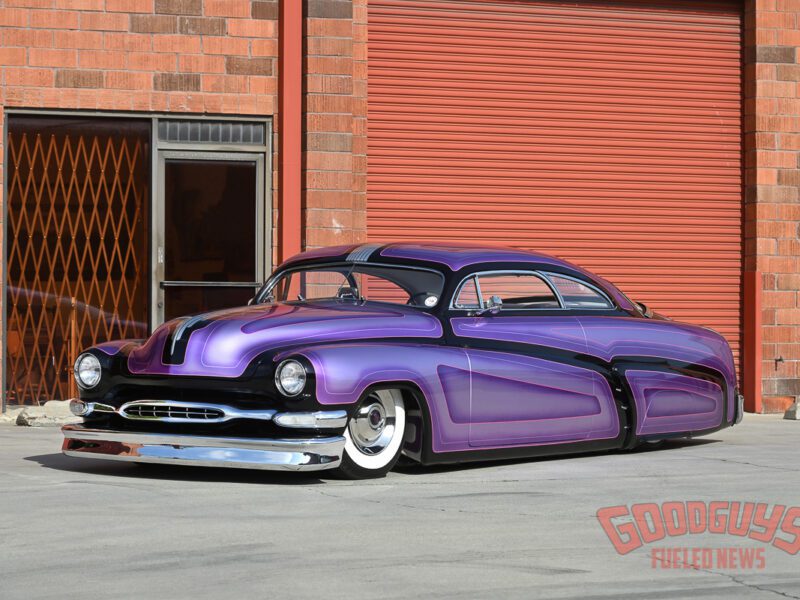The R&C Dream Truck – A Custom Built by Legends
As the first editor of Rod & Custom magazine, Spence Murray (crowned earlier as a Gazette Legend) had considerable influence on the direction of rodding in the 1950s. But perhaps none of those contributions equaled the first-ever magazine “project car” – the Rod & Custom Dream Truck.
Prior to joining R&C in 1953, Murray worked at Hop Up magazine. He’d already built a couple of customs, so he had an affinity for sleekly modified vehicles. When he took over R&C, one of his first decisions was to put together a custom using suggestions from its readers. The project would be chronicled on the pages of the book, providing months of what we now call content. Spence volunteered his ’50 Chevy pickup as the focus.
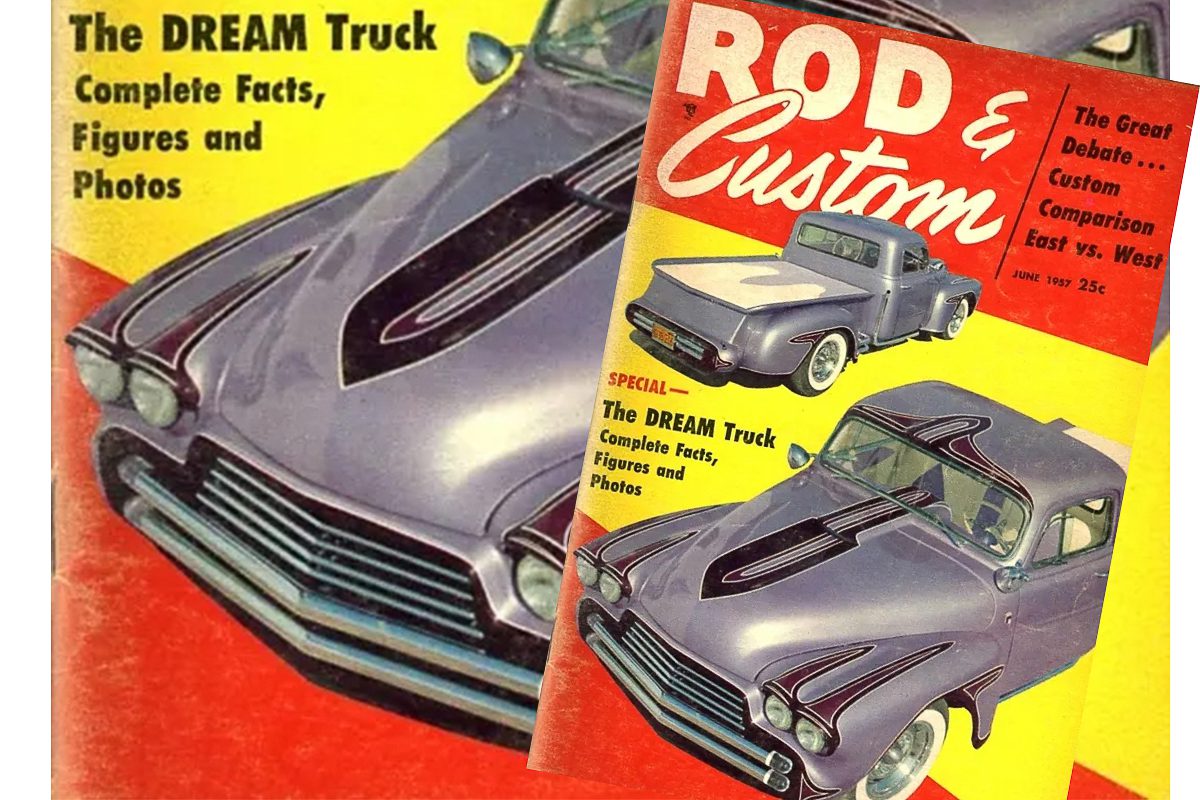
Drawing on 2,500 suggestions from readers, prominent local rodder Lynn Wineland did the original design. It included nearly every custom metal trick in the book. (Wineland would later join the R&C staff.) The project got off to a good start when Murray secured one of the first Chevy V8s in late 1954.
Next began the truck’s tour de all-stars, starting with Sam Gates of Gates Auto Body in Pasadena. Gates chopped the top 3-3/8-inches and sectioned the body 5-1/3-inches, before handing the baton…err…torch to Neil Emory and Clay Jensen of Valley Custom in Burbank.
This acclaimed duo finished the chop and sectioning and hand-formed the dash. Murray once remarked that Emory’s hammer-welded door seams fit so perfectly only the jams needed any leading. The next stop was Davis Custom Shop, also in Burbank. Curly Davis exquisitely blended the dash into the doors and enlarged the rear window.
Murray next hauled the car up to legendary customizer Gene Winfield in Modesto, who radiused the front wheel openings and sectioned the hood. Then it was back to SoCal to Barris Kustoms, where George and company added quad headlights, scoops on the roof and hood, and front and rear grille openings formed by molding together front pans from a ’53 Studebaker. Very Barris. As were the front fenders, a blend of Buick and Chevrolet sheet metal.
This front-end metamorphosis made the nose unrecognizable compared to a stock Chevy pickup grille. Yet another famed customizer, Bob Hirohata, added unique clear front and translucent red rear turn-signal lights on the ends of the tubular grille bars. The Dream Truck rolled on stock 15-inch reversed chrome wheels ringed by wide-white rubber.

As for paint, in 1957 another Goodguys Legend, Dean Jeffries, blew on a tasteful metallic lavender hue accented by scallops. Next, Murray sent the truck all the way to Indiana, where Bob Metz continued the hauler’s transformation. Metz hand-crafted the truck’s signature feature, those slanted and soaring fins that jutted out atop the bed like two colossal scimitars. Kudos to Metz for imagining that quarter-sections of ’41 Buick turret tops could be recast into fins.
After Metz finished his work, back to Barris the truck went, where the lavender gave way to a white-with-scallops livery. Later, this again gave way to a metallic lime gold color, embellished by red scallops, applied this time by Gazette Legend Larry Watson. This continual color switcheroo was enjoyed by thousands of R&C readers and car show attendees across the United States. In 1958, the Dream Truck was nominated as one of 28 “Top Customs of the Year” in Motor Life magazine.
Later that year, however, fate flipped the script on the Dream Truck…literally.
While flat-towing the Dream Truck behind his ’58 Chevrolet pickup en route to a car show in Des Moines, Iowa, the ’58 blew a rear tire. The rig jackknifed, sending the two trucks flying off the road into a destructive barrel roll. Both vehicles were seriously damaged. (Luckily, Murray emerged unscathed.)
Murray had the truck returned to Barris, but the cost of repair was prohibitive, so he parted it out. Eventually the remains ended up in Stockton, California, where they stayed untouched for nearly 20 years until Murray’s friend Bruce Glascock tracked the truck down. It took seven years for Glascock to convince the owner to part with it. A lengthy restoration ensued, using craftsman from LA, Irvine, Oklahoma City and Tulsa. The result was spot on, a Phoenix-like resurrection, after which it joined the Darryl Starbird show tour.
As a “content creator,” the Dream Truck project hit, featured in nearly 40 Rod & Custom how-to and feature stories. Car Craft also joined in the fun. The truck’s fame was so widespread the Danbury Mint created a 1/24-scale metal replica.
In 1986, Glascock sold the truck to custom car collector Kurt McCormick in Missouri, who made a few mechanical upgrades and cosmetic refinements while regularly showing and occasionally driving the legendary truck. After more than 35 years, McCormick sold the truck a couple of a years ago to new caretaker Tim McMann.
Arguing about the most “iconic” custom of all time is a pointless task. There are too many standouts to choose from, many chronicled on these pages. But considering the legendary craftsmen that contributed to the project, plus the boost it gave to a fledgling Rod & Custom, the Dream Truck was more than a dream. It was a dream that became reality.

